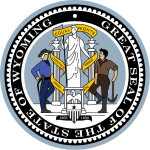In the United States, a state supreme court is the highest court in the state judiciary of a U.S. state. On matters of state law, the judgment of a state supreme court is considered final and binding in both state and federal courts.
The government of the U.S. state of Missouri is organized into the state government and local government, including county government, and city and municipal government.
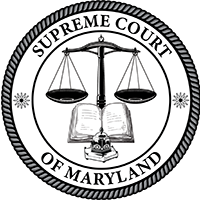
The Supreme Court of Maryland is the highest court of the U.S. state of Maryland. The court, which is composed of one chief justice and six associate justices, meets in the Robert C. Murphy Courts of Appeal Building in the state capital, Annapolis. The term of the Court begins the second Monday of September. The Court is unique among American courts in that the justices wear red robes.

The Supreme Court of Florida is the highest court in the U.S. state of Florida. It consists of seven justices—one of whom serves as Chief Justice. Six members are chosen from six districts around the state to foster geographic diversity, and one is selected at large.
The Supreme Court of Appeals of West Virginia is the state supreme court of the state of West Virginia, the highest of West Virginia's state courts. The court sits primarily at the West Virginia State Capitol in Charleston, although from 1873 to 1915, it was also required by state law to hold sessions in Charles Town in the state's Eastern Panhandle. The court also holds special sittings at various locations across the state.
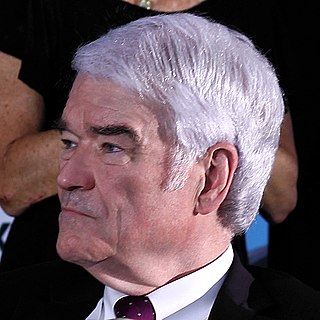
Nathan Lincoln Hecht is an American lawyer who served as the chief justice of the Supreme Court of Texas from 2013 until his mandatory retirement December 31, 2024. A Republican from Dallas, Hecht was first elected to the Supreme Court in 1988 and was reelected to six-year terms in 1994, 2000 and 2006. He secured his fifth six-year term on November 6, 2012. He was appointed chief justice by Governor Rick Perry on September 10, 2013, and was sworn into that position by retiring Chief Justice Wallace B. Jefferson on October 1, 2013.

The Appellate Court of Maryland is the intermediate appellate court for the U.S. state of Maryland. Formerly known as the Maryland Court of Special Appeals, it was created in 1966 in response to the rapidly growing caseload in the Supreme Court of Maryland. Like the state's highest court, the tribunal meets in the Robert C. Murphy Courts of Appeal Building in the state capital, Annapolis.

The New Mexico Supreme Court is the highest court in the U.S. state of New Mexico. It is established and its powers defined by Article VI of the New Mexico Constitution. It is primarily an appellate court which reviews civil and criminal decisions of New Mexico's trial courts of general jurisdiction and certain specialized legislative courts, only having original jurisdiction in a limited number of actions. It currently resides in the New Mexico Supreme Court Building in Santa Fe.

The Oklahoma Court of Criminal Appeals is one of the two highest judicial bodies in the U.S. state of Oklahoma and is part of the Oklahoma Court System, the judicial branch of the Oklahoma state government.

The Government of Tennessee is organized under the provisions of the 1870 Constitution of Tennessee, first adopted in 1796. As set forth by the state constitution, administrative influence in Tennessee is divided among three branches of government: executive, legislative, and judicial.
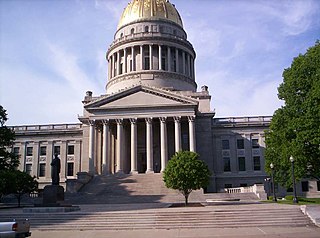
The Government of West Virginia is modeled after the Government of the United States, with three branches: the executive, consisting of the Governor of West Virginia and the other elected constitutional officers; the legislative, consisting of the West Virginia Legislature which includes the Senate and the House of Delegates; and the judicial, consisting of the West Virginia Supreme Court of Appeals and lower courts.

The Alabama Court of Civil Appeals is one of two appellate courts in the Alabama judicial system. The court was established in 1969 when what had been one unitary state Court of Appeals was broken into a criminal appeals court and a civil appeals court. The unified Court of Appeals had been operative since 1911. The initial court's members were appointed by Governor Albert P. Brewer. The court is currently housed in the Alabama Judicial Building in Montgomery, Alabama. Judges on the court are elected in partisan elections on staggard six year terms. Today, the court's membership is all Republican but it was composed of just Democrats between 1969 and 1989. At that time, Republican Governor Guy Hunt appointed Robert J. Russell to the bench on April 16, 1989 thus becoming the first Republican on the court. Ironically, Russell was defeated for re-election in 1990 but was again appointed almost immediately to another vacancy on the court by Governor Hunt in January 1991.
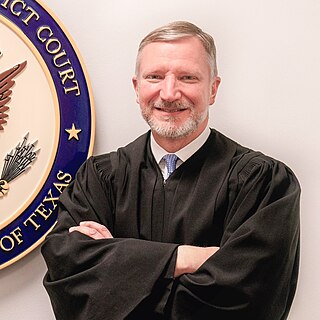
Jeffrey Vincent Brown is a United States district judge for the United States District Court for the Southern District of Texas and a former justice of the Texas Supreme Court. He was appointed to the U.S. District Court by President Donald Trump.

The 2016 Wisconsin Fall General Election was held in the U.S. state of Wisconsin on November 8, 2016. One of Wisconsin's U.S. Senate seats and all eight seats in the United States House of Representatives were up for election, as well as half of the Wisconsin Senate seats and all 99 Wisconsin State Assembly seats. Voters also chose ten electors to represent them in the Electoral College, which then participated in selecting the 45th president of the United States. The 2016 Fall Partisan Primary was held on August 9, 2016.
Keith G. Kautz is an American lawyer who served as a justice of the Wyoming Supreme Court from 2015 to 2024. He previously served as a judge of the Wyoming District Court from 1993 to 2015.

The 2020 Illinois judicial elections consisted of both partisan and retention elections, including those for three seats on the Supreme Court of Illinois and 10 seats in the Illinois Appellate Court. Primary elections were held on March 17, 2020, and the general election was held on November 3, 2020. These elections were part of the 2020 Illinois elections.

The 2018 Illinois judicial elections consisted of both partisan and retention elections, including those for one seat on the Supreme Court of Illinois and five seats in the Illinois Appellate Court. Primary elections were held on March 20, 2018, and general elections were held on November 6, 2018. These elections were part of the 2018 Illinois elections.

The 2012 Illinois judicial elections consisted of both partisan and retention elections, including those one seat of the Supreme Court of Illinois for ten seats in the Illinois Appellate Court. Primary elections were held on March 20, 2012, and general elections were held on November 6, 2012. These elections were part of the 2012 Illinois elections.

The 2022 Illinois judicial elections consisted of both partisan and retention elections.

The 2024 Wyoming elections were held in large part on November 5, 2024, to elect members of the federal, state, and local governments.
